
views
X
Research source
Also known as "granny hair," the gray hair look is sported by men and women alike.[2]
X
Research source
Although a difficult color to do on your own, DIY silver locks can be had with the right combination of bleach, toner, and dye.
Making Sure Your Hair is Ready
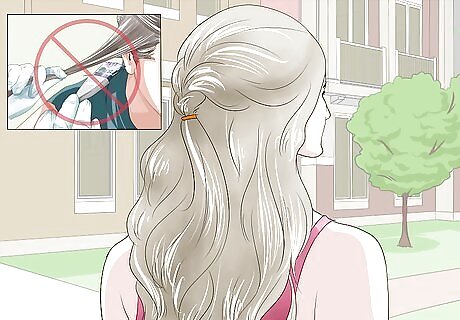
Stop dyeing your hair for a few months. Unless you already have light platinum hair, you will need to bleach your hair to a very light color in order to get it gray. This degree of bleaching will likely damage your hair, so you will want it to start out as healthy as possible. If you've recently bleached your hair or used permanent dyes, avoid further chemical processing for about three months. If your hair is already extremely light in color, near a level 9 or 10, you can skip ahead directly to dying without having to wait. Your hair doesn't have to be naturally platinum blonde to go straight to dyeing it gray. If your hair has already been bleached and does not have a dye on top of it, then it's ready to go. If your hair is already dyed, you may need to have the current color removed since color can't lift color. You can do that at home with bleach, but you'll get much better results by visiting a professional stylist.
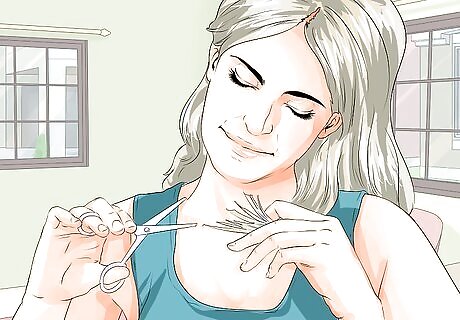
Let your hair grow out. When bleaching darker hair to platinum blonde, some damage will be unavoidable. Since the ends of your hair are most likely to become dry and damaged during bleaching, you may need to trim them off when you're finished. Make sure you have an extra inch or two of hair you're comfortable with losing.
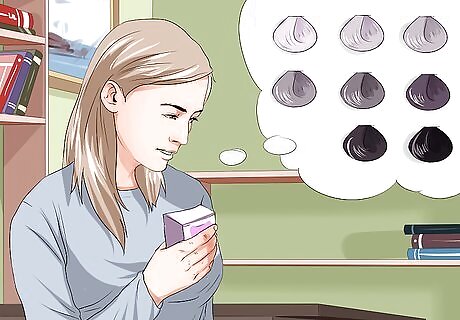
Choose the right dye. With the silver trend in full swing, you have many different dyes to choose from. Do you want a light silver or a gunmetal gray? Do you want natural-looking neutral gray or an otherworldly shade with a hint of blue? Browse beauty blogs for reviews and pictures of how each dye looks. Pick the dye you like most. In addition to permanent dyes, certain pale purple and blue semi-permanent dyes and hair toners will also turn platinum hair gray. However, keep in mind that these types of coloring only last a couple of weeks. Luckily, since these treatments are very gentle, you can simply reapply them as needed without having to wait.
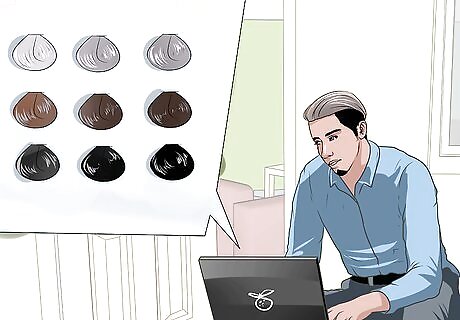
Buy your materials while you wait. Even though silver hair is gaining popularity, it can still be difficult to find gray hair dye in brick and mortar shops. You will likely need to purchase your dye through a website. Remember that shipping will take a while, so plan accordingly. In addition to the dye, you will also need a deep conditioner, a bleach kit, and a purple toner.
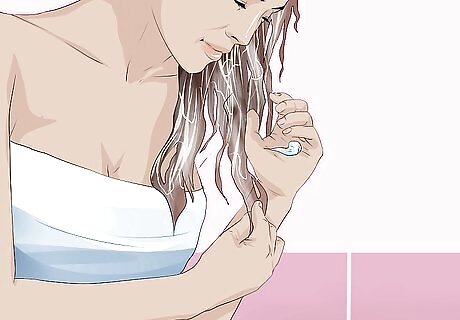
Condition your hair the week before. Both bleach and, to a lesser extent, permanent hair dye will dry out your hair by lifting away its natural oils. In order to minimize damage, you will need to make sure your hair is as well-moisturized as possible with a deep conditioning. The exact instructions for your deep conditioner will vary. Check the product's packaging for details. In general, you will apply a large dollop to clean hair and massage it in as you would shampoo. Leave it to set under a bathing cap for 10 to 30 minutes before rinsing. Allow your hair to air dry afterwards. Semi-permanent dyes and most toners are unlikely to dry out hair. These products do not penetrate the hair's outer layer and instead simply deposit pigment to only the surface of the hair.
Bleaching Your Hair
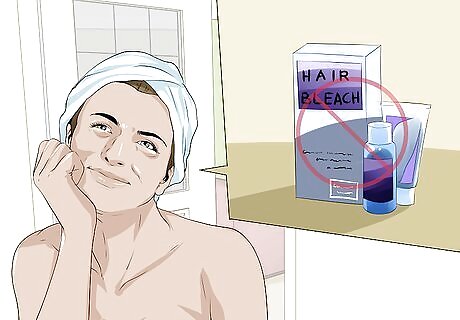
Wait a day or two after your last shampoo. Don't bleach hair that is freshly washed. The bleaching process will dry your hair out significantly, potentially causing damage and breakage. Your hair's natural oils will prevent this. A freshly-washed scalp is also much more sensitive and will itch more during bleaching.

Mix bleach powder with developer. Your bleach kit will have two main components: dry powdered bleach and a hydrogen peroxide solution. Mix the two according to the ratios or instructions on your dye kit, using a tint brush or plastic spoon. Follow the instructions on your kit if they are different from what is described here. Developers come in different strengths rated by numbered "volumes." If your hair is already fairly light, use volume 10. Volume 20 is for darker blondes, volume 30 for light browns, and volume 40 for darker browns and black. Higher volumes can be more damaging to your hair, but they can also lighten it faster.
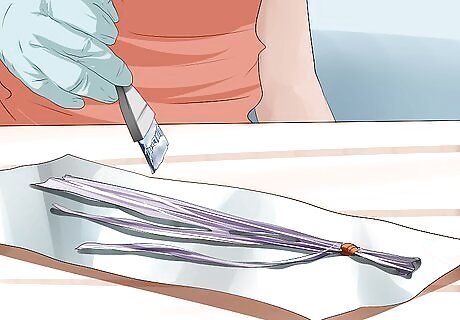
Do a strand test. If you've never bleached your hair to platinum blonde before, you will need to know how long it takes your hair to lighten. Select a small amount of hair close to the roots at an inconspicuous place and section it off. Brush on some bleach using a tiny brush. Let the bleach set and check the strand every 5 to 10 minutes. If your hair is not light enough after an hour, you will need to do multiple rounds of bleaching. Rinse the bleach away between rounds and reapply it. To minimize damage, do not leave bleach in your hair for over an hour.
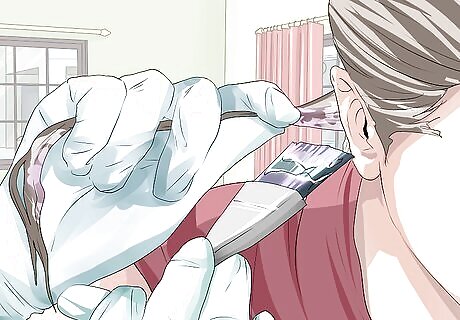
Apply the bleach. Use a tint brush to apply your bleach mixture evenly to your hair. Work in sections, brushing in the direction your hair grows. Start from the very back of your head and work your way forward, leaving the sections of hair that frame your face for the end. If your hair is thick, flip up each section to expose the next layer of hair underneath and apply there, too. Leave about a one-inch section around your roots to do last, after the face-framing strands. The heat from your scalp will cause your roots to bleach a little faster than your normal hair. Try to go as quickly as possible to ensure an even color.
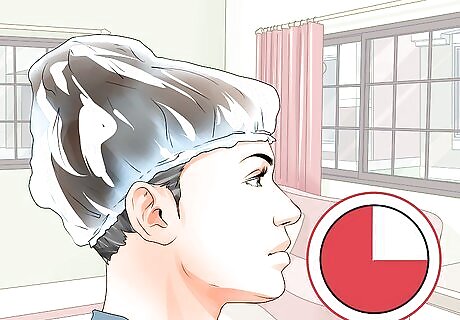
Let the bleach sit. Refer back to the results of your strand test to determine how long you should leave the bleach in your hair. Cover your hair up with either a shower cap or plastic wrap while you wait. Keep in mind that a little itchiness on your scalp is normal.
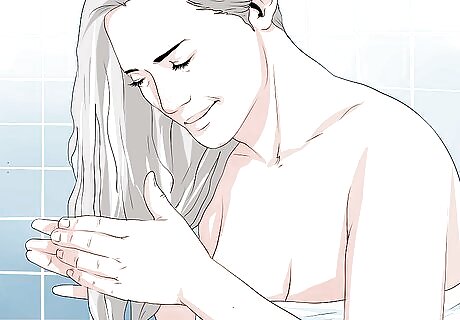
Rinse out the bleach. Use warm water without shampoo. Be very careful to not get any bleach in your eyes as you rinse. If possible, ask someone to rinse your hair for you in a sink while you look up as if you were in a salon. If you aren't immediately moving on to the next step, allow your hair to air dry. Blow drying can further strip your hair of moisture, potentially exacerbating any damage the bleach has caused.
Getting the Perfect Gray
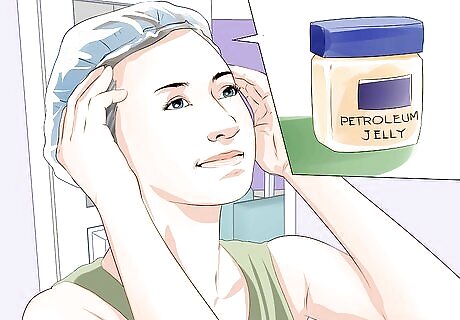
Apply a layer of petroleum jelly around your hairline and face. While toner will wash out eventually, you probably don't want a ring of purple skin framing your face for the next week or so. Scoop up a dollop of petroleum jelly or another thick moisturizer with your index finger and run it along any skin that is normally in contact with your hair. (Don't forget your ears!) The petroleum jelly will block your skin from absorbing the dye. If you didn't bleach immediately before this step, remember that your hair should be unwashed. Color will grip dirty hair better than it will hair that is clean.
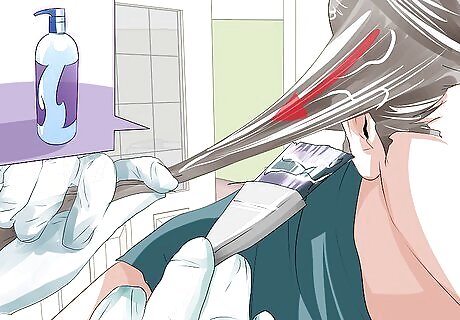
Start with purple toner. After you've bleached your hair, it will likely be a pale yellow. Because purple is at the opposite side of the color wheel, purple toner will balance out the "brassiness" of yellow. The end result will be closer to a neutral white and ready for the gray dye. Wear gloves when applying toner to avoid staining your hands. Begin with damp hair. If you haven't just done the bleach step, use a spray bottle to spritz your hair with some lukewarm water. Dip a tint brush into your toner. If your toner is packaged in a bottle, squeeze it into a bowl first. Brush the toner on from roots to tips. Start with the hair in back of your head and work forward. Make sure all of your hair is evenly coated. If your hair is thick, clip already-coated hair to the side to get to the layer underneath.
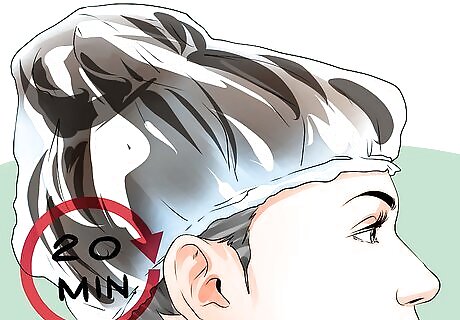
Leave the toner to set for 20 minutes. You don't have to cover your hair, but a cap or plastic wrap will help to prevent staining. After 20 minutes, rinse the toner out with warm water. Wrap a towel around your hair and gently squeeze out the excess water. If you're using permanent hair dye, allow your hair to air dry first. If your dye is semi-permanent, apply it while your hair is still damp.
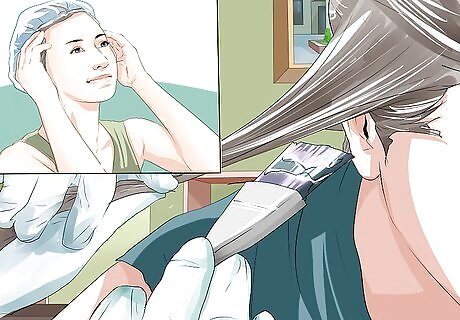
Add in your dye. Reapply your petroleum jelly barrier first if it was washed away while rinsing out the toner. With a tinting brush, apply your gray dye in the same way you did your toner. At this stage, be especially careful to keep application even. Wear gloves when applying dye.
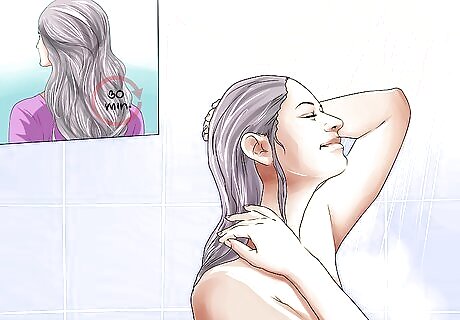
Leave the dye in for roughly a half hour before rinsing. Run your hair under warm water until the water begins to run clear. Rinsing in the shower should be fine and is unlikely to stain your skin. Shampoo is unnecessary (and may cause your color to run), but you should finish with a conditioner formulated for color treated hair. Remember that each hair dye brand may vary in application. Always check your dye's packaging for specific instructions.

















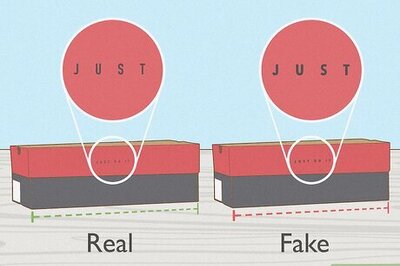
Comments
0 comment